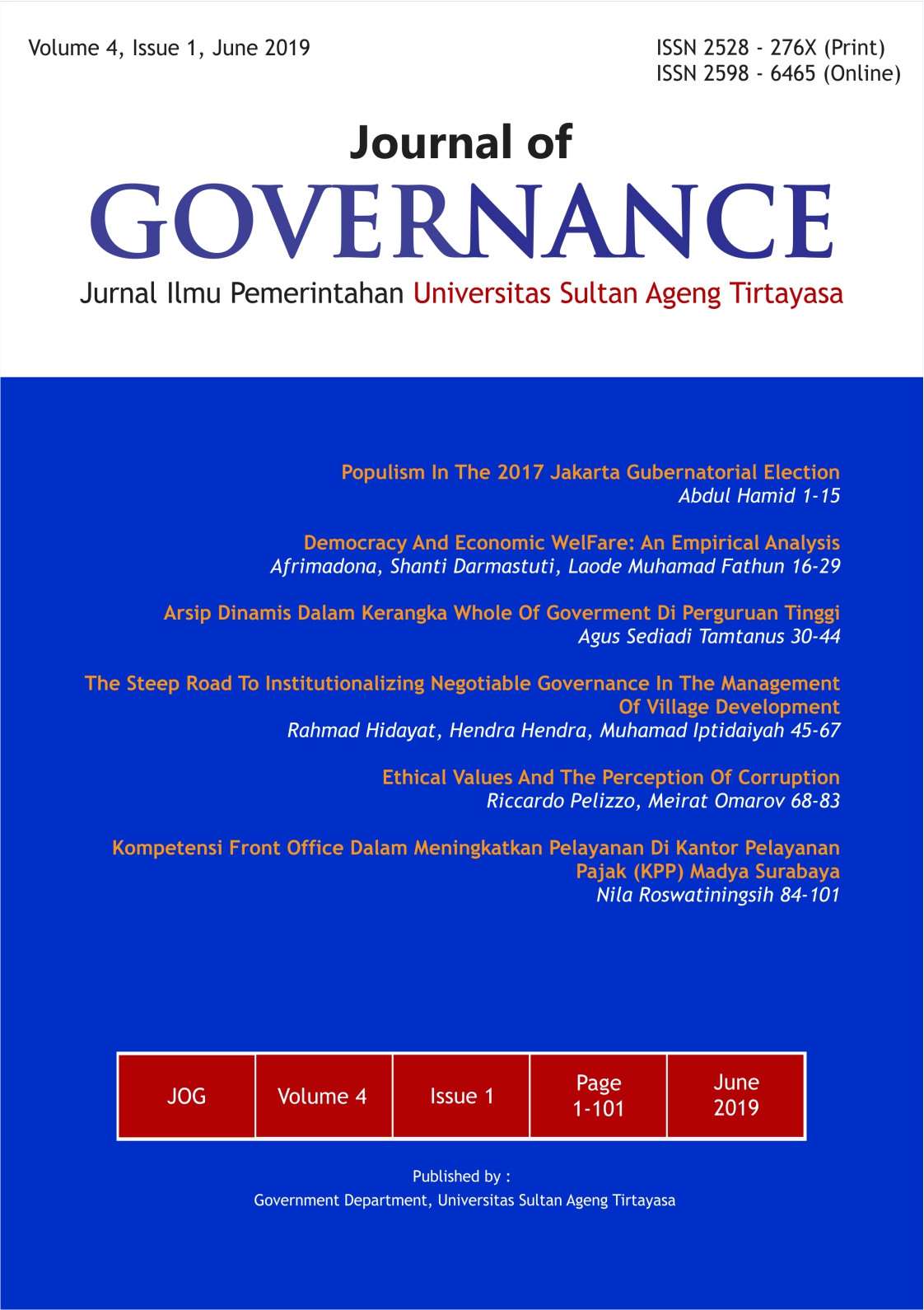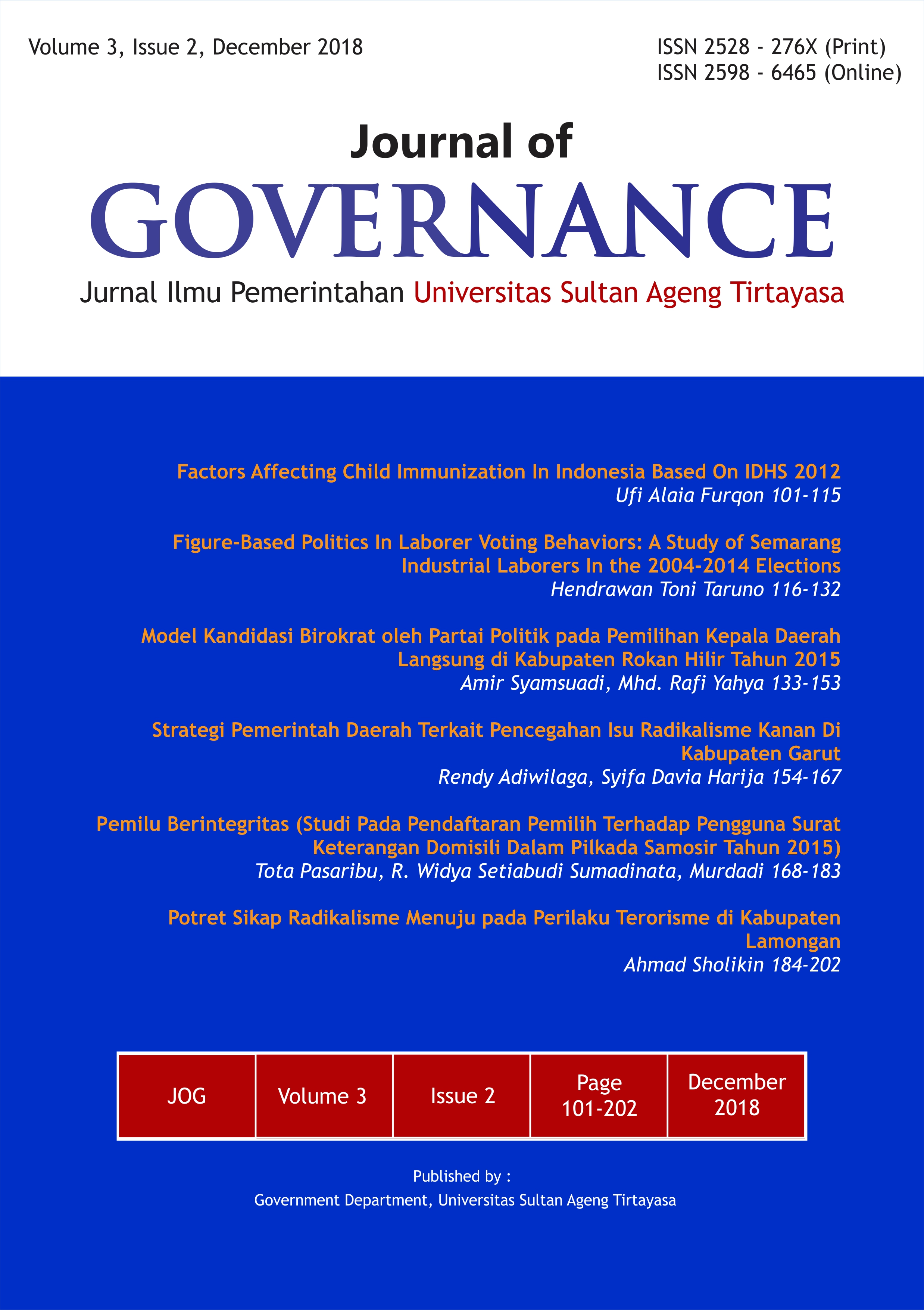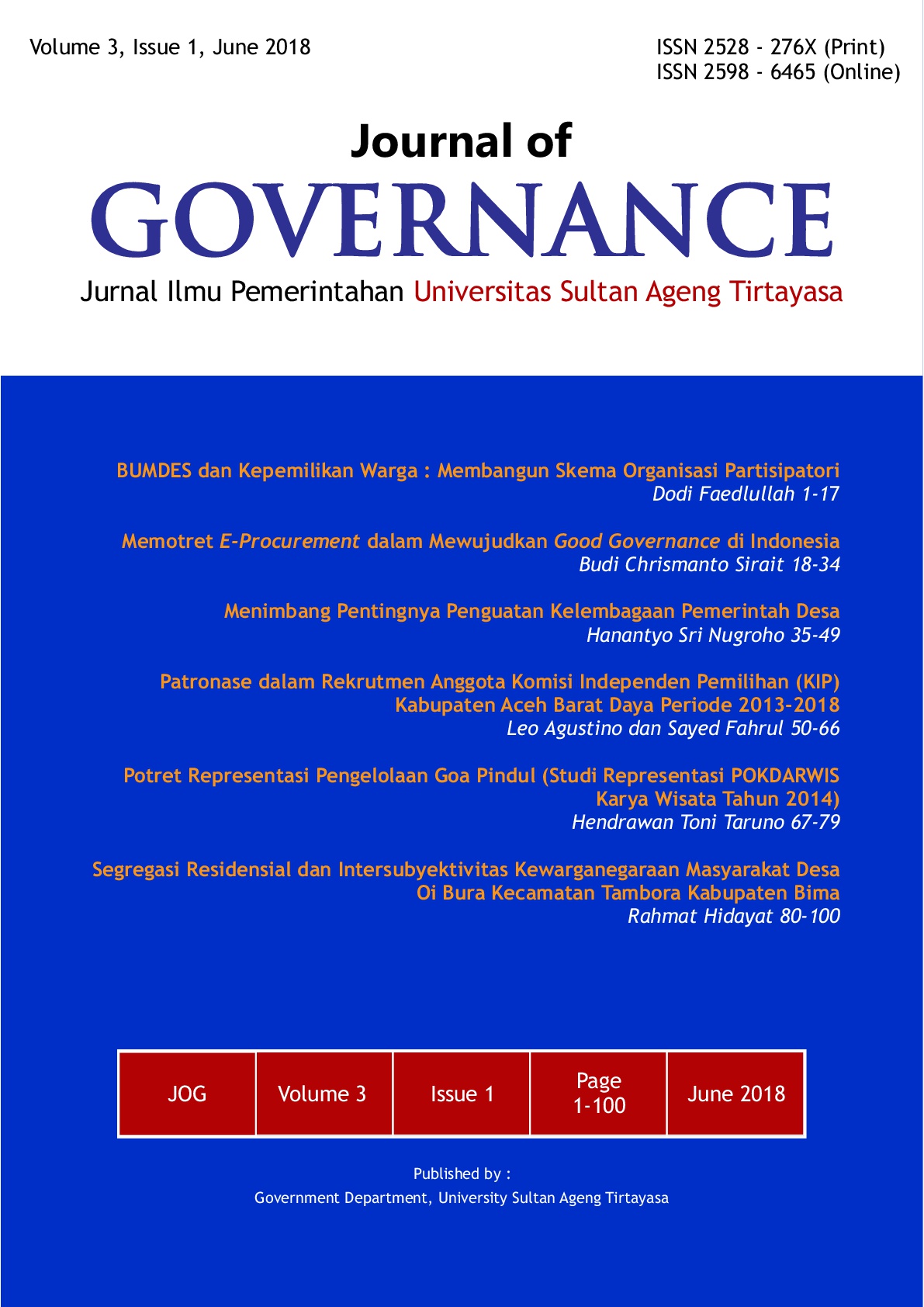Eco-City as A Concept of Samarinda City Development After the Relocation of The National Capital
Abstract
The relocation of the country's capital has had a positive and a negative impact on the city of Samarinda. The eco-city concept was put forward as a solution to this challenge. This research aims to explore the application of eco-city in the construction of Samarinda City. Descriptive analysis and interviews are the methods employed. The results show that eco-cities can boost economic growth while reducing the impact of excessive urbanization. This research is qualitative, using a literary study approach. The study looks at the concept of eco-cities by focusing on indicators of mass transport development, building decent, affordable, and versatile housing, and reducing pollution and waste. The findings of this study indicate that the Samarinda City Government's vision, mission, and regional excellence programs have indirectly adopted the principle of eco-city. However, in terms of implementation, it is still far from the concept of an eco-city itself.
Keywords
Full Text:
PDF 127-141References
Aji, G., Arfani, Z., Sari, A. M., Seprtiani, R., &; Abdurrahman Wahid, U. K. H. (2023). The Impact of the Relocation of the New State Capital on the Economy and Social in East Kalimantan Province. Journal of Legal Sciences, 1(5), 2985–5624. http://jurnal.kolibi.org/index.php/kultura
Alomari, A. F. (2020). Urban upgrading and its role in Sustainable urbanism. IOP Conference Series: Materials Science and Engineering, 870(1), 12003.
Ardan, M. S. (2023). Samarinda will have mass transportation. kaltimkece.id.
Arumingtyas, L. (2020). Air Pollution, a Silent Killer in Jabodetabek.
Ayodele Coker, M., Bassey Oboe, U., & Ugwu, U. (2013). Managing sustainable development in our modern cities: Issues and challenges of implementing Calabar urban renewal programmes, 1999-2011. Asian Social Science, 9(13), 74–84. https://doi.org/10.5539/ass.v9n13p74
Central Bureau of Statistics DKI Jakarta. (2019). Number of Population and Population Growth Rate by District/City in DKI Jakarta Province in 2019.
Central Bureau of Statistics of East Kalimantan Province. (2022). Number of Motor Vehicles. In Www.Bps.Go.Id.
Cao, S., &; Li, C. (2011). The exploration of concepts and methods for low-carbon eco-city planning. Procedia Environmental Sciences, 5, 199–207.
De Azevedo Chagas, A. T., da Costa, M. A., Martins, A. P. V., Resende, L. C., &; Kalapothakis, E. (2015). Illegal hunting and fishing in Brazil: A study based on data provided by environmental military police. Natureza e Conservacao, 13(2), 183–189. https://doi.org/10.1016/j.ncon.2015.11.002
Dembińska, I., Kauf, S., Tłuczak, A., Szopik-Depczyńska, K., Marzantowicz, Ł., & Ioppolo, G. (2022). The impact of space development structure on the level of ecological footprint-Shift share analysis for European Union countries. Science of The Total Environment, 851, 157936.
Deril, V. P. (2021). ANALYSIS OF THE PERFORMANCE OF GENERAL SUDIRMAN ROAD SECTION IN SAMARINDA. STUDENT CURVE, 1(1), 2163–2181.
Dong, H., Fujita, T., Geng, Y., Dong, L., Ohnishi, S., Sun, L., Dou, Y., &; Fujii, M. (2016). A review on eco-city evaluation methods and highlights for integration. Ecological Indicators, 60, 1184–1191.
Feleki, E., Vlachokostas, C., &; Moussiopoulos, N. (2018). Characterisation of sustainability in urban areas: An analysis of assessment tools with emphasis on European cities. Sustainable Cities and Society, 43, 563–577.
Grochulska-Salak, M. (2021). Re-urbanization in a model of sustainable development of an eco-city. ACTA SCIENTIARUM POLONORUM - Architectura Budownictwo, 20(1), 3–12. https://doi.org/10.22630/aspa.2021.20.1.1
Gudipudi, R., Lüdeke, M. K. B., Rybski, D., &; Kropp, J. P. (2018). Benchmarking urban eco-efficiency and urbanites' perception. Cities, 74, 109–118.
Hasanah, N. (2015). Green City , Smart City , Compact City , Mega City, Satellite/New City. Department of Urban and Regional Planning, Faculty of Civil Engineering and Planning, Sepuluh Nopember Institute of Technology.
Hutasoit, W. L. (2019). Analysis of the transfer of the national capital. DEDICATION: Journal of Social Science, Law, Culture, 39(2), 108–128.
Ibáñez-Forés, V., Coutinho-Nóbrega, C., Guinot-Meneu, M., &; Bovea, M. D. (2021). Achieving waste recovery goals in the medium/long term: Eco-efficiency analysis in a Brazilian city by using the LCA approach. Journal of Environmental Management, 298, 113457.
Jones, P. (2017). Formalizing the informal: Understanding the position of informal settlements and slums in sustainable urbanization policies and strategies in Bandung, Indonesia. Sustainability, 9(8), 1436.
Labolo, M., Averus, A., &; Udin, M. M. (2018). Determinant Factor of Central Government Relocation In Palangkaraya , Central Kalimantan Province. International Journal of Business an Management, 2(3), 52–65. https://doi.org/10.26666/rmp.ijbm.2018.3.8
Lehmann, S. (2011). What is green urbanism? Holistic principles to transform cities for sustainability. Climate Change-Research and Technology for Adaptation and Mitigation, 243–266.
Li, X., & Zhuang, X. (2023). Eco-City Problems: Industry–City–Ecology, Urbanization Development Assessment in Resource-Exhausted Cities. Sustainability (Switzerland), 15(1), 1–22. https://doi.org/10.3390/su15010166
Maleki, B., Rubio, M. d M. C., Hosseini, S. M. A., &; De La Fuente Antequera, A. (2019). Multi-criteria decision making in the social sustainability assessment of high-rise residential buildings. IOP Conference Series: Earth and Environmental Science, 290(1), 12054.
Manurung, P. (2018). A city for all; Comprehensive urban planning ideas. ANDI.
Mazda, C. N. (2022). Analysis of the Impact of Relocating the National Capital (IKN) on Social Security. Journal of Enersia Publika, 6(1), 1–12.
Nwafor, J. . (1980). The relocation of Nigeria's Federal Capital: A device for greater territorial integration and national unity. GeoJournal, 4.4(1), 359–360.
Samarinda City Government. (2022). Public Consultation on the Preliminary Draft of Changes to the Regional Medium-Term Development Plan (P-RPJMD) of Samarinda City for 2021-2026. Samarinda City Government.
Remondi, F., Burlando, P., & Vollmer, D. (2016). Exploring the hydrological impact of increasing urbanisation on a tropical river catchment of the metropolitan Jakarta, Indonesia. Sustainable Cities and Society, 20(1), 210–221. https://doi.org/10.1016/j.scs.2015.10.001
Sodri, A., &; Garniwa, I. (2016). The effect of urbanization on road energy consumption and CO2 emissions in emerging megacity of Jakarta, Indonesia. Social an Behavioral Sciences, 227(1), 728–737. https://doi.org/10.1016/j.sbspro.2016.06.139
Sofaniadi, S., Huda, M., &; Hartawan, F. (2022). Sustainable Transportation and Its Impact on Emission Reduction in Semarang City. Journal of Riptek, 16(1), 81–89. https://doi.org/10.35475/riptek.v16i1.144
Sugiyono. (2016). Educational Research Methods Quantitative, Qualitative, and R&D approaches. Alphabeta.
Sukmana, N. A., &; Yuliastuti, N. (2020). Government effort through urban renewal for maintaining cultural heritage areas in Old City Semarang. IOP Conference Series: Earth and Environmental Science, 409(1), 12027.
Syarifuddin, T. I., Rahmawati, D. E., &; Efendi, D. (2020). Political trust of the Dayak Paser indigenous law community regarding the capital city relocation policy. Society, Culture and Politics, 33(4), 393. https://doi.org/10.20473/mkp.v33i42020.393-404
Todaro, M. (1989). Economic development in the third world countries. Translated by Gholam Ali Farjadi.
Wekesa, B. W., Steyn, G. S., &; Otieno, F. A. O. F. (2011). A review of physical and socio-economic characteristics and intervention approaches of informal settlements. Habitat International, 35(2), 238–245.
Wong, T.-C., &; Yuen, B. (2011). Understanding the origins and evolution of eco-city development: An introduction. In Eco-city planning: Policies, practice and design (pp. 1–14). Springer.
Wu, Y., Zhen, H., Delang, C. O., Hu, Z., Qian, J., &; Li, Y. (2021). How to build an eco-efficient city? Cases studies in Chinese urbanization over the past 20 years. Sustainable Cities and Society, 75, 103387.
Xavier, A. F., Naveiro, R. M., Aoussat, A., &; Reyes, T. (2017). Systematic literature review of eco-innovation models: Opportunities and recommendations for future research. Journal of Cleaner Production, 149, 1278–1302.
Yu, L. (2014). Low carbon eco-city: New approach for Chinese urbanisation. Habitat International, 44(October 2014), 102–110. https://doi.org/10.1016/j.habitatint.2014.05.004
Zhang, H., Lv, H., &; Ma, M. (2021). Ecological life cycle analysis-based installation capacity determination of building energy-supply systems. Energy and Buildings, 244, 111002.
DOI: http://dx.doi.org/10.31506/jog.v10i1.25727
Refbacks
- There are currently no refbacks.
⟨Recent Issues⟩ | ⟨Upcoming Issues⟩ |
Recent Issues
Volume 6, Issue 2: (2021) | Volume 6, Issue 1: (2021) | Volume 5, Issue 2: (2020) | Volume 5, Issue 1: (2020) | Volume 4, Issue 2 (2019) |
 |  |  |  |  |






